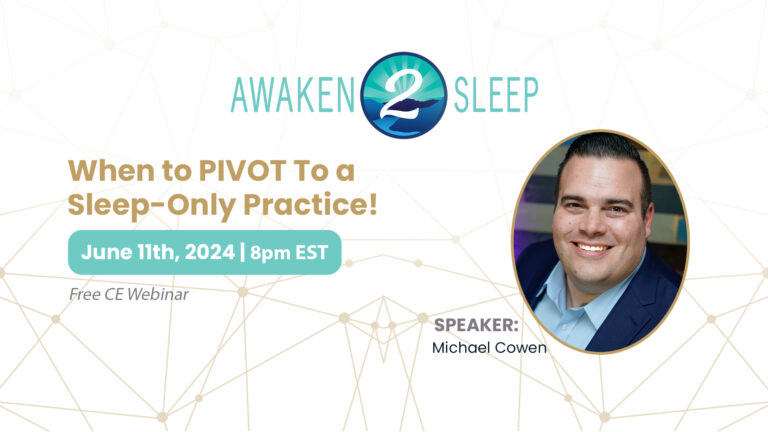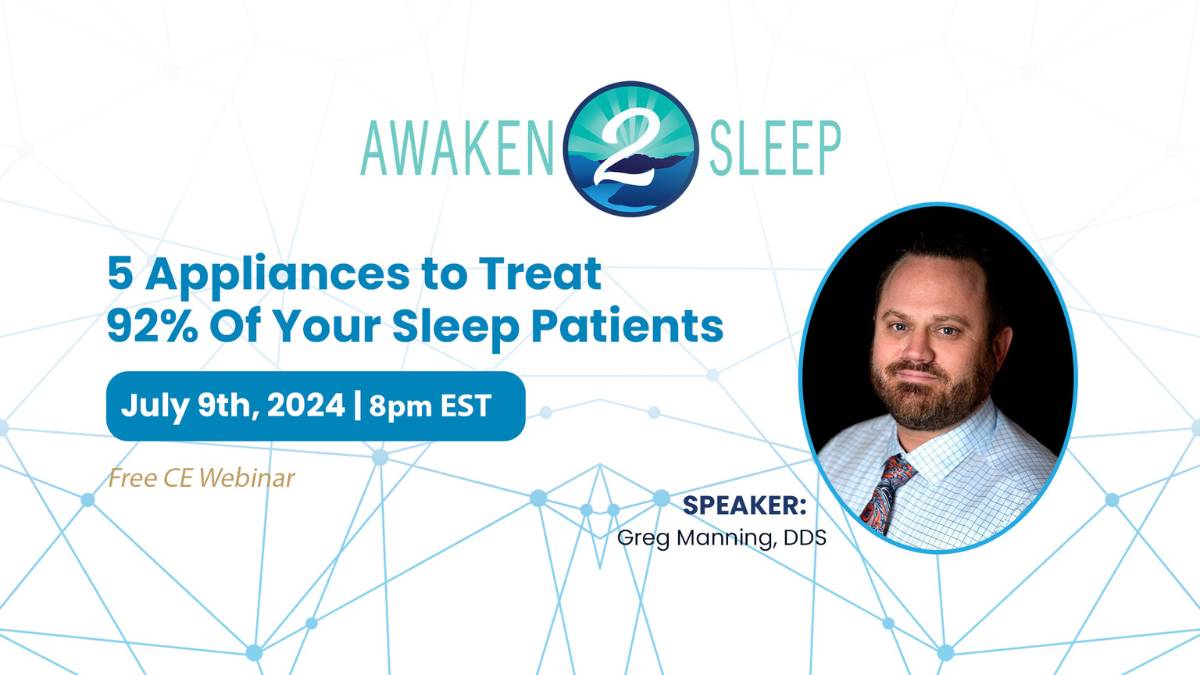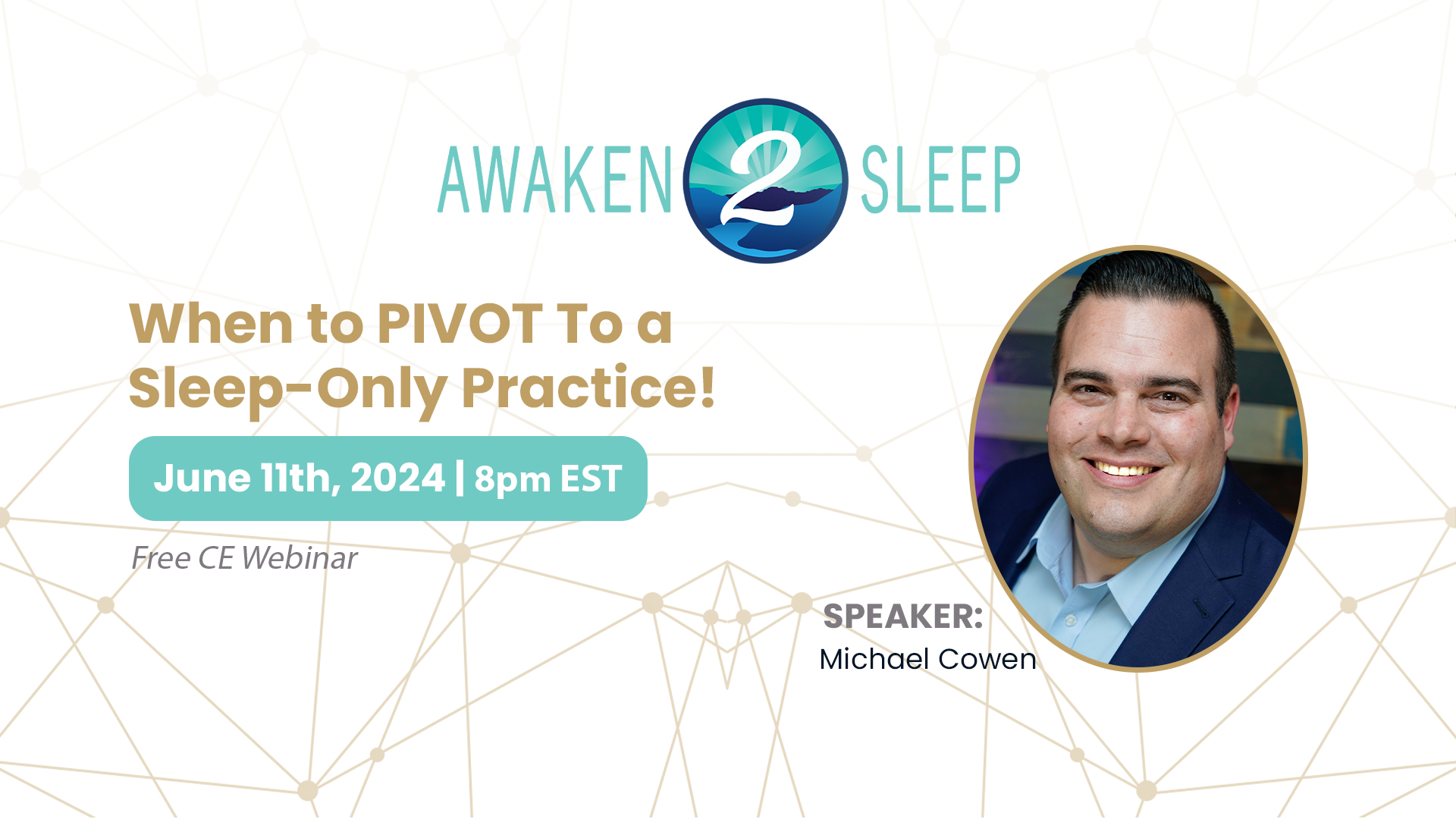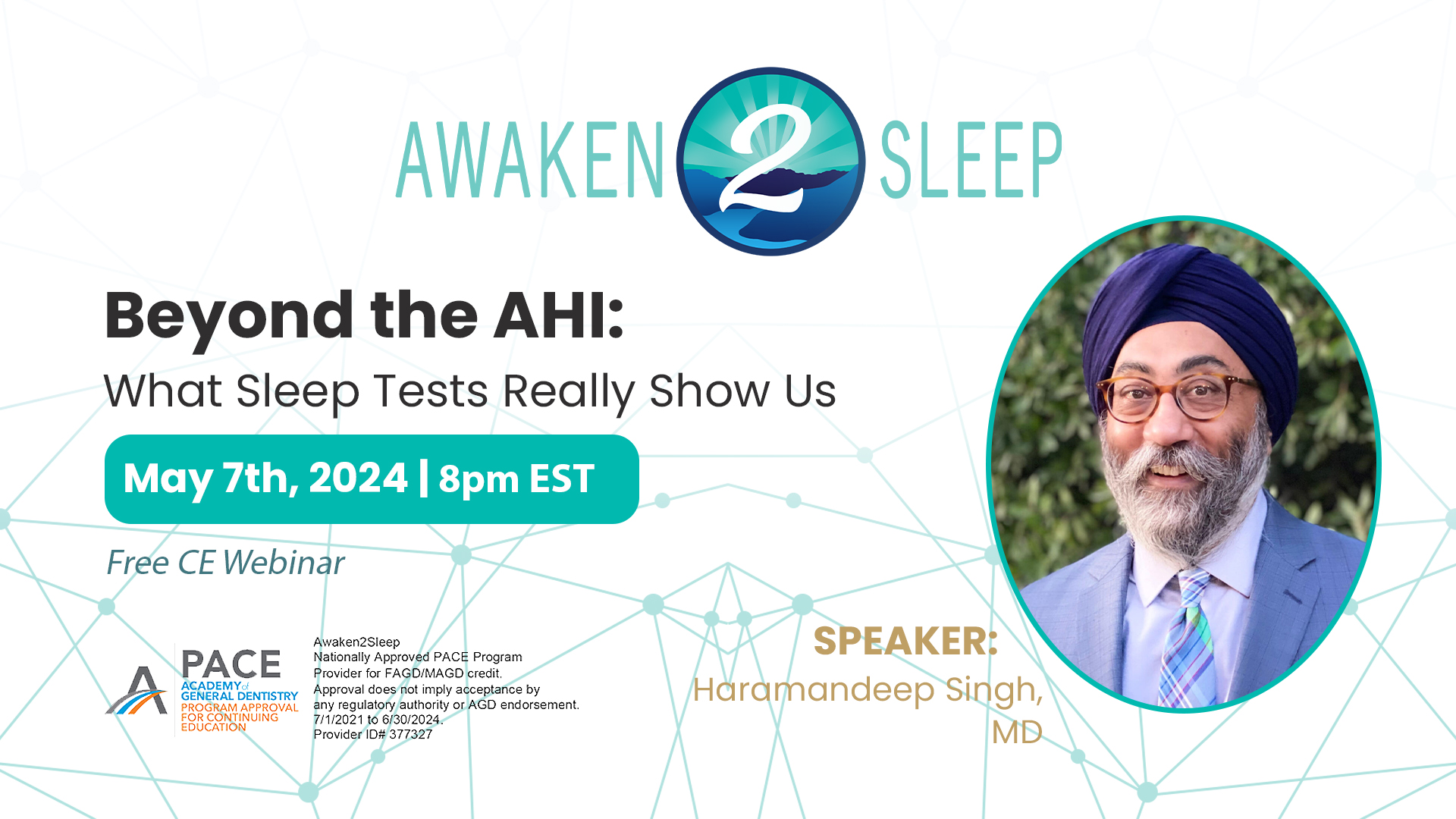by Michael Cowen
Are there really that many sleep patients who need your help and where are they?
I’ll give you a hint.
Yes, they are on your schedule, in your chair, and in your waiting room right now. They were on yesterday’s schedule, too. You did hygiene checks on some of them, one canceled, and you prepped a Bruxzir on #30 for another.
The path to treating more patients in your practice starts with screening, and there is a recipe to have a successful screening protocol. It contains three key ingredients that will aid you in clearly and quickly identifying these patients.
The first ingredient lies in the patient’s health history. If it includes any indication of airway disorders, you should initiate a conversation about airway health. A short list would include: any cardiac condition (including but not limited to hypertension), history of stroke, diabetes, obesity, chronic headaches, or mood disorders.
Do you know the difference between signs (physical evidence observed in an exam) or symptoms (subjective information shared by the patient)?
They aren’t the same, but both are useful here.
Signs are the second ingredient in the recipe. Signs of an airway disorder are easily distinguishable and include: Mallampati score of 3 or more, bruxism, scalloped tongue, and acid reflux. When you observe these signs, it’s an indicator you should have a conversation about airway health.
The third ingredient is patient symptoms. These can include snoring, morning headaches, chronic fatigue, difficulty concentrating, excessive napping, and dependence on stimulants such as coffee, soda, energy drinks or medications. If your patient presents with any of these symptoms, have a conversation about airway health with them.
That brings us to the real problem, right?
The conversation. The crucial conversation.
Your last patient was 15 minutes late. There’s a hygiene check in Op 2 and an emergency patient in Op 3. You’re already 20 minutes behind, and there’s no end in sight.
How in the world are you supposed to have this conversation with the patient who screened positive for an airway disorder?
You don’t do it. No one does.
And that is why it is so hard to “find” these patients.
Because you’re not talking to them.
Most general dentists screen less than 70% of their patients for OSA.
The following is a template taking all these variables into consideration. It’s mindful of the dynamic environment of your practice, and this template works. Try it 3 times.
Ruth is a 62 y/o female and longtime patient of your practice. She’s in overall good health with a clean health history (Ingredient #1) which has no chronic diseases managed by any medication whatsoever. Her intraoral signs (Ingredient #2) include a Mallampati score of 3, significant wear facets, and a scalloped tongue. But Ruth’s “real” pain points are hidden in her symptoms (Ingredient #3) which include snoring, frequent morning headaches and daytime fatigue, specifically when she picks up her grandson from school every day at 3 p.m.
At this point, the moment for your crucial conversation comes into focus. Ruth and your schedule will be overwhelmed if you speak with her in detail about everything you just found. You’re already 20 minutes behind, remember? You must make a memorable impact quick. So, you pick the top 3 things you’ve identified that will connect with Ruth and motivate her to take action.
Specifically, you want Ruth to get a sleep test that will be interpreted by a board-certified sleep physician who will clearly identify whether or not Ruth has a condition (obstructive sleep apnea) which you are capable of treating.
What if your conversation with Ruth sounded like this?
You enter the Op and your hygienist gives you the scoop about Ruth. Then you ask the RDH a simple question, “Is there anything else?”
After a brief pause, your hygienist replies, “Yes. Ruth has a Mallampati score of 3 and signs consistent with abfractions on 18/19 and wear facets on 8/9. She frequently has morning headaches and fatigue in the afternoon when she drives to pick up her grandson from school.”
You look at Ruth in the eyes with compassion and say, “That sounds hard. How often do you feel tired when you are driving?”
“Almost every day. And it terrifies me to think I could hurt my precious grandson. He is my life”, Ruth shares emotionally.
“OK, let me take a look,” you respond. As you do a quick intraoral exam, you confirm exactly what your hygienist referenced. Now it’s time for action.
“Ruth, I’m so glad you told us about this today. I am concerned that you might have an airway issue that is attacking your sleep, which would explain what I’m seeing in your mouth as well as your morning headaches and sleepiness in the afternoon.”
You continue, “I would love for you to wake up pain-free and with all the energy you need for your day so you can spoil Tommy even more. Would you like to see if we can help you get there?”
How do you think Ruth responds? 98% of the time Ruth is getting a sleep test.
With gratitude for her motivation to move forward, you define the next step. “I’m glad to hear that. Right now, we need to get more information. So, this is where I call on a physician who is a sleep expert to give us more insight.”
Let’s break down the 3 components of what I call “hero positioning” that just happened in this short conversation.
- Disassociate the person from the problem – We have to help Ruth understand that she is not the problem. But she does have a problem that can be overcome.
- Connect their emotional pain points – Connect Ruth back to her own value system. Her grandson is at the top of the list and her fear of harming him almost stirs her to tears. And no one wants to be in physical pain with those morning headaches.
- Identify a positive alternate outcome – Ruth already knows what it is like to wake up in pain and feel exhausted every day. Painting the picture of what her life could be like if she overcame this challenge is a critical, motivating factor for her journey.
These psychological underpinnings may not be overtly stated in each dialogue with your patients. But never underestimate their value. When you connect your patient’s value system and emotional pain points, you are in a position to empower them to take action.
As you can see, the conversation about airway health is not a difficult one. Nor does it require much time. But like any good recipe, it takes the right ingredients and some practice to get it right. Keep talking. Be confident. Guide your patients to a better life. You’ll taste the results soon.
Listening to patients is one aspect of starting a conversation on sleep and health. Read another article by Michael Cowen that adds the financial aspects by clicking here:

Michael Cowen, CEO and Founder of Awaken2Sleep, started his journey in sleep medicine in 2003 performing in-lab sleep studies as a classically-trained pediatric sleep technician at Loma Linda Children’s Hospital in Southern California. After recognizing his calling to passionately assist others to help their own patients, Mr. Cowen went on to become an expert in the Business of Sleep Medicine, building and developing a network of sleep centers/DME companies across the United States. In 2015, seeing an opportunity to bring testing and awareness to the life-threatening condition that almost took his daughter’s life, he founded Awaken2Sleep, a company whose vision is to empower dental providers and their teams to treat patients with sleep apnea.








